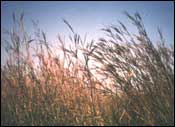- Mission Statement
- Background
- Henslow's Sparrow Report
- Objectives and Justification
- Partners in Flight High Priority Species
- General Vegetation Types and Data Sheets
- Size of Grassland
- Establishing Line Transects
- Sample Field Map
- Avian Surveys
- Vegetation Sampling
- JIZZ Descriptions and Species Codes
- Grassland Species in A.O.U. Check-list Order
- Suggested Reading
- Liability
- Acknowledgements and Miscellaneous
- Project Prairie Birds Release of Liability
 (PDF 271 KB)
(PDF 271 KB) - Project Prairie Birds Release of Landowner Liability
 (PDF 257 KB)
(PDF 257 KB) - Project Prairie Birds Vegetation Data Sheet
 (PDF 254.8 KB)
(PDF 254.8 KB) - Project Prairie Birds Bird Survey Data Sheet
 (PDF 254.9 KB)
(PDF 254.9 KB) - Project Prairie Birds Booklet without Species Photos
 (PDF 2.7 MB)
(PDF 2.7 MB)
Project Prairie Birds
A Citizen Science Project for Wintering Grassland Birds
Objectives and Justification

Southeastern grasslands are the primary destination for more than a dozen species of Nearctic migratory grassland birds. However, there are large gaps in information concerning winter distribution, habitat requirements and population changes in this group of nationally-recognized declining species. In 1998-1999, the pilot project area for Project Prairie Birds (PPB) was the Upper Texas Coast, home to the largest urban area in the state, an area of exponential human growth and development. The greater Houston area once contained extensive prairie habitat, but it is rapidly disappearing. Our goal is to promote a program that will allow for the rapid collection of important data that will be included in the Partners in Flight planning process. Project objectives are to: (1) determine area-distribution of priority grassland species, (2) identify habitat preferences for target species, (3) utilize data collected to develop land management guidelines and recommendations for conservation planning, and (4) give concerned citizens a project that they can contribute their efforts towards.

Loggerhead shrike
Photo Copyright Michael L. Gray
Project Prairie Birds can be done in various ecoregions of the nation or elsewhere in temperate grasslands.
We are proposing this as a “citizen science” project designed to make use of the large number of expert and active birders and ornithologists. We expect to map the distribution and identify specific habitat requirements for all over-wintering avian grassland species where PPB is conducted. This instructional web site describes standardized field methods for conducting research on grassland birds. This Web site is designed to provide the best possible self-paced training. Remember to stay with the protocol since we are gathering comparative data among sites. Changing my detail, however small it might be, will create problems in the analyses and therefore the entire project. Survey sites can be conducted on either public or private lands. Both avian surveys and vegetation plots will be run a minimum of three times per winter season within specified intervals. Vegetation plots will also be conducted and will include five random plots per bird transect.
The Gulf Coast Bird Observatory and its PPB Coordinator will serve as the primary contact, coordinate communication, oversee the design of field techniques and data analysis, among other tasks.
Objectives and Incentives
For the Birder...
- Develop advanced identification skills.
- Learn avian field sampling techniques from biologists.
- Gain access to birding in special areas normally closed to public.
- Birding enjoyment with a focus on data collection that will positively benefit bird populations. You will make a difference!
For the Landowner...
- Learn which bird species are benefiting from your land management techniques.
- Participate in an all-volunteer conservation effort in your community.
- Learn about birders and the economic benefits of birding.
- Develop new ideas on cost-effective grassland management.
Project Prairie Birds Program
Texas Parks and Wildlife Department
4200 Smith School Road
Austin, TX 78744
or send a message to: nature@tpwd.state.tx.us